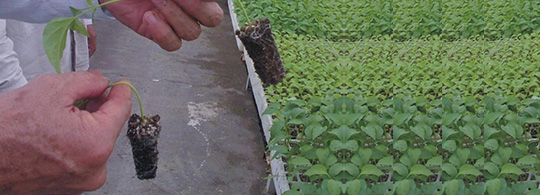Ferticell Bact. Purpurecillium Lilacinum (Insecticide)
| TECHNICAL DATASHEET | |
|---|---|
| Ferticell Bact. Purpurecillium Lilacinum |

Purpureocillium lilacinum powder for root knot nematode control
Purpureocillium lilacinum, previously known as Paecilomyces lilacinus, It works as nematodes insecticide for plant parasitic nematodes control, which are small, worm-like pests that can infect plant roots and cause damage to crops. P. lilacinum can parasitize the eggs, juveniles, and adult females of root knot and cyst nematodes, inhibit the hatching of eggs and limit the growth of root-knot nematodes. This beneficial fungus is capable of growing at a wide range of soil temperatures, with optimal growth occurring between 26°C and 30°C. It also has a high tolerance for pH and can grow on various substrates. If you’re looking for how to control nematode organiclly in soil, Try our Paecilomyces lilacinus products today and take the first step towards healthier, more productive plants and soil.
Target Insect:
- Root Knot.
- Cyst.
- False root knot.
- Lesion.
- Burrowing.
- Ring.
Mode of Action
Purpureocillium lilacinum is a fungus that is highly effective at controlling various types of nematodes, including root-knot nematodes, cyst nematodes, golden nematodes, xenodermoid nematodes, and even the intestinal roundworms of humans and animals. It has been shown to have a high rate of egg parasitism of up to 60-70% against Meloidogyne incognita and Nemacystus albicans, and is considered a promising biocontrol agent for preventing and controlling root-knot nematodes.
Paecilomyces lilacinus mode of action is inhibiting root-knot nematodes involves the fungus surrounding the nematode eggs with a viscous matrix of biocontrol bacteria hyphae, which then rupture the surface layer of the eggshell with the help of exogenous metabolites and fungal chitinase. The fungus then invades and replaces the eggshell, and may also secrete toxins to kill the nematodes.
Its hosts include root-knot nematodes, cyst nematodes, golden nematodes, xenodermoid nematodes, and even intestinal roundworms of human beings and animals. It is the most promising biocontrol agent for preventing and controlling root-knot nematodes. The inhibition mechanism of Paecilomyces lilacinus on root-knot nematodes is that after Paecilomyces lilacinus contacts with nematode oocysts, biocontrol bacteria hyphae surround the whole egg in a viscous matrix, and the hyphal ends become thicker. The surface layer of the eggshell is ruptured due to the activities of exogenous metabolites and fungal chitinase, and then fungi invade and replace the egg shell. It can also secrete toxins to kill nematodes.
Benefits:
- Protect crop from yield loss
- Can increase yields and harvest quality
- Promoting stronger, healthier roots
- Use while post-planting or planting
- Zero residue and can be use for organic farming
Application Rate:
- To control nematode populations, apply 2-5 kilograms of P. lilacinum per hectare during planting.
- For ongoing cultivation, reapply 2-5 kilograms per hectare every 28 days for season-long control.
- This can be done by incorporating the product into the soil profile as a lay-by application, or by using methods such as soil drench, in furrow, or drip irrigation at transplanting or shortly after planting.
- By following these application guidelines, you can effectively protect your crops from nematode damage.














